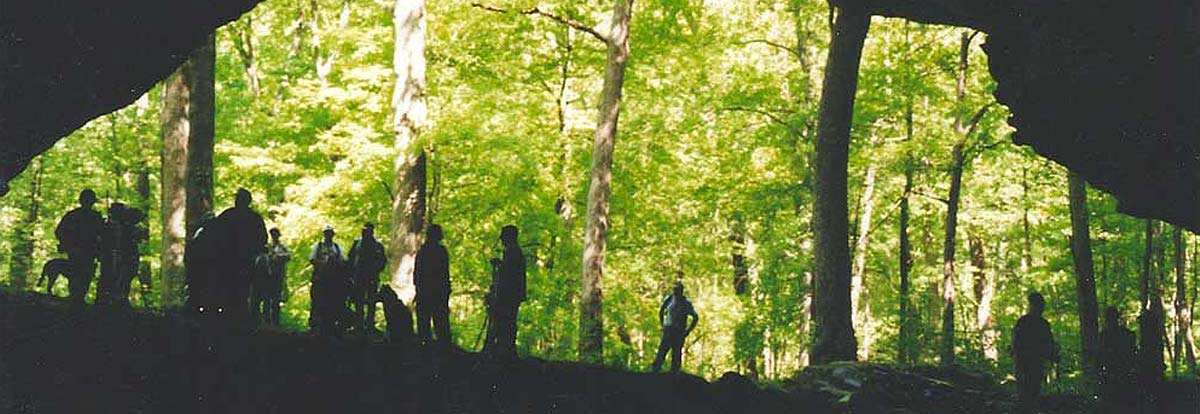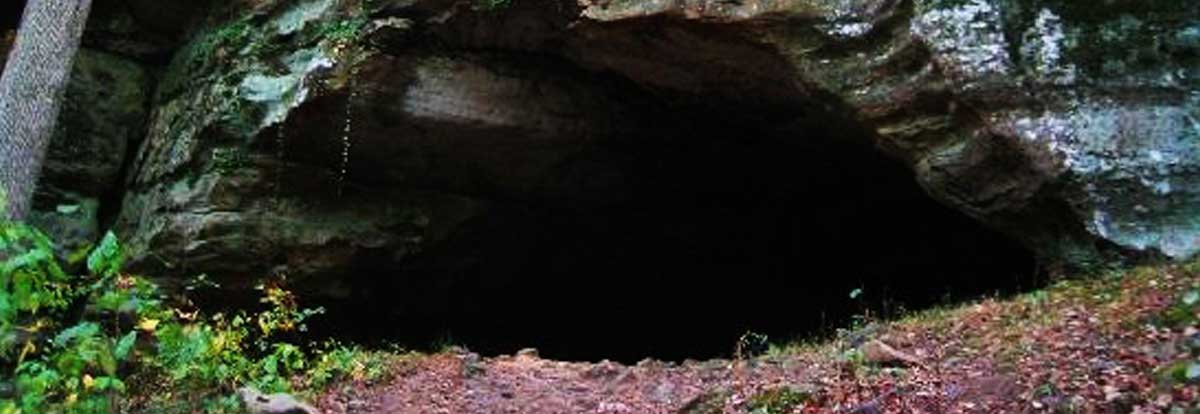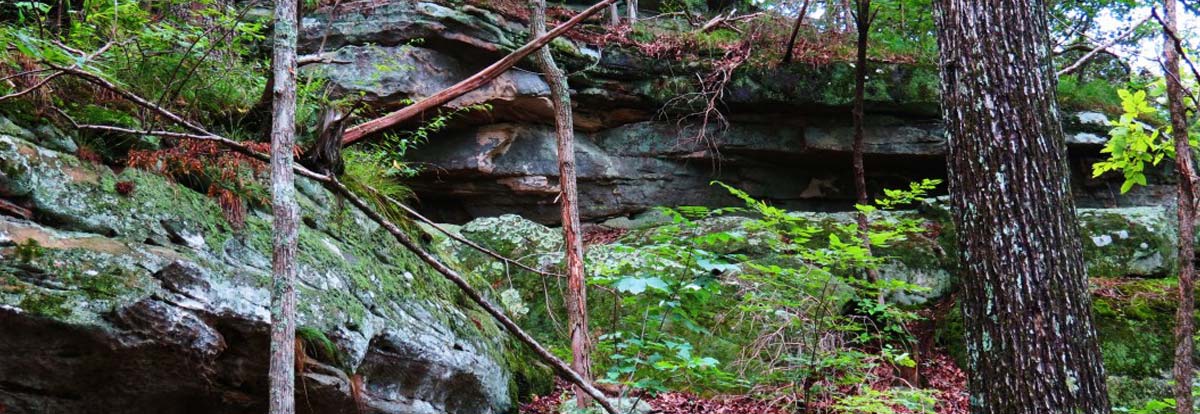Sand Cave IL

Largest Sandstone Cave with Great History
Check out Sand Cave, a little known historical gem of Shawnee National Forest! Take in a unique sampling of the original landscape of Illinois, while hiking an easy walking trail to what is known as the largest sandstone cave in North America! The mouth of Sand Cave is nearly 30 feet wide and set into the rock approximately 100 feet constituting a jaw-dropping experience for any hiker or equestrian.
Hidden Hiking Trail
One of the characteristics that make Sand Cave a site worthy of exploration is its remoteness. There is no trailhead and very little signage along the easily identifiable path. Follow the main trail back about a half mile to a small opening where a Natural Area sign cautions visitors about the rare and fragile ecosystem all around them. Shortly past this relatively open meadow-like area, the trail forks.
Follow the right trail around the edge of the bluff for another half mile and all of a sudden you will come upon the cave’s mouth. Hike the left trail to take a slightly longer trek through the glade and around to the Sand Cave entrance, but don’t stop there. Hike along the vertical cliffs just past the cave opening and experience the magnificent beauty of original Illinois terrain!
Indigenous American History at Sand Cave
More than 12,000 years ago, Sand Cave and the surrounding areas were a part of the large triangular region extending from northern Illinois to Arkansas which was home to the Illiniwek, a nation of twelve to thirteen distinct Native American tribes after whom Illinois takes its name.
Evidence of these native groups inhabitants of Sand Cave is still noticeable. Near the back of the cave is a rock ring where water has pooled. A large round stone sits in the center of the cave making a perfect resting point and allowing for an optimal view of the inside of the cavern.

Underground Railroad
The Underground Railroad utilized Sand Cave as a place to hide large numbers of people. It was also used it as a landmark to let runaway slaves know they were still on the path to freedom. In the 1840’s, the Dabbs, Singleton, and Miller families escaped to the North, bought property, and created Miller Grove, a black community made up of freed slaves. They created a safe haven to shelter those on their way to “Canaan Land,” a phrase for Canada where those who escaped could reach freedom.
In 1846, these families founded the Mt. Gilead African Methodist Episcopal Church. It was named for a hilly region which, according to Hebrew teachings, was a safe area between slavery and freedom in Canaan for Jacob, the grandson of Abraham.
Harriet Beecher Stowe recognized the important influence of the community at Miller Grove by using it as a signature stop for Eliza’s escape to freedom in Stowe’s famous novel Uncle Tom’s Cabin.
How do I get to Sand Cave?
To explore this prehistoric landmark’s rich past, take IL-145 to IL-147. Then take a right onto Cedar Grove Road and follow it to Sand Cave Road. Take a left onto Sand Cave Road and follow it until it ends. Park off of the gravel road in the small grassy area (only large enough for a couple of vehicles). Do not continue to the right down the gravel road as it is a personal driveway.
There is no parking lot or trail head, so park completely off of the gravel road and follow the main trail which appears to be a sandy ATV path with possible horse shoe prints from our equestrian travelers.

Are there other caves to explore in the Shawnee National Forest?
While “Rock Shelters” are quite common along many bluffs throughout the Shawnee Forest and state parks that dot the area, there are very few caves that are open to the public. Due to the fungus known as White Nose Syndrome, the only caves on public lands you are allowed to explore in our area are Sand Cave and Cave In Rock. Be sure to check out both to compare sandstone caves with the more typical limestone caves of the area!
Nearby Areas of Interest
If history is what is calling you to the Shawnee National Forest, check out the nearby Millstone Bluffs and Iron Furnace. Millstone Bluffs offer a unique archaeological dig along the trail that takes you back in time to Southern Illinois indigenous roots including petroglyphs, ancient art etched in stone, still plainly visible after hundreds of years.
Iron furnace provides more modern history and is a great opportunity to learn about the origins of iron manufacturing in America, have a picnic or take a splash in the shallow creek perfect for wading and cooling off on those hot Summer days.
